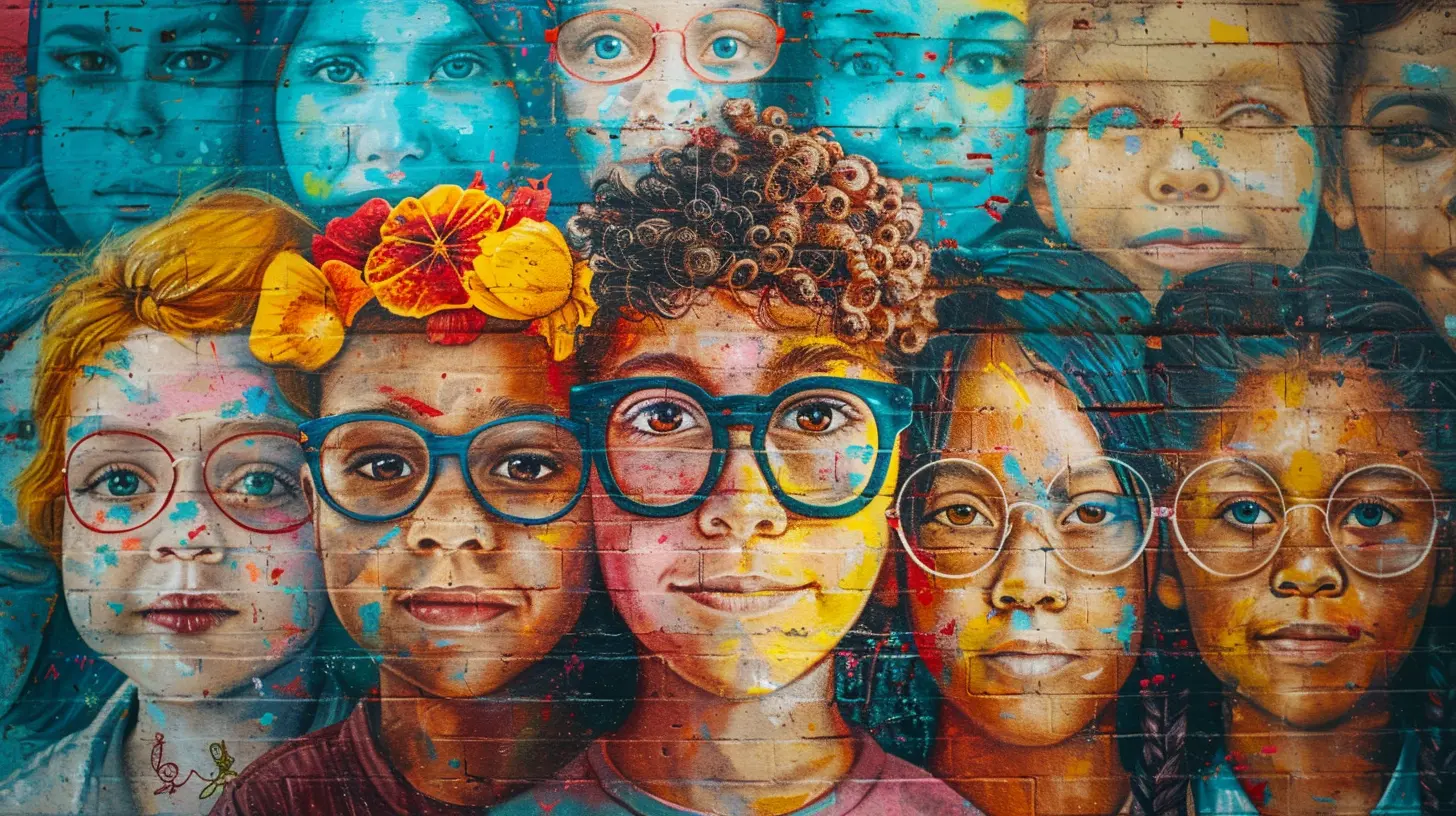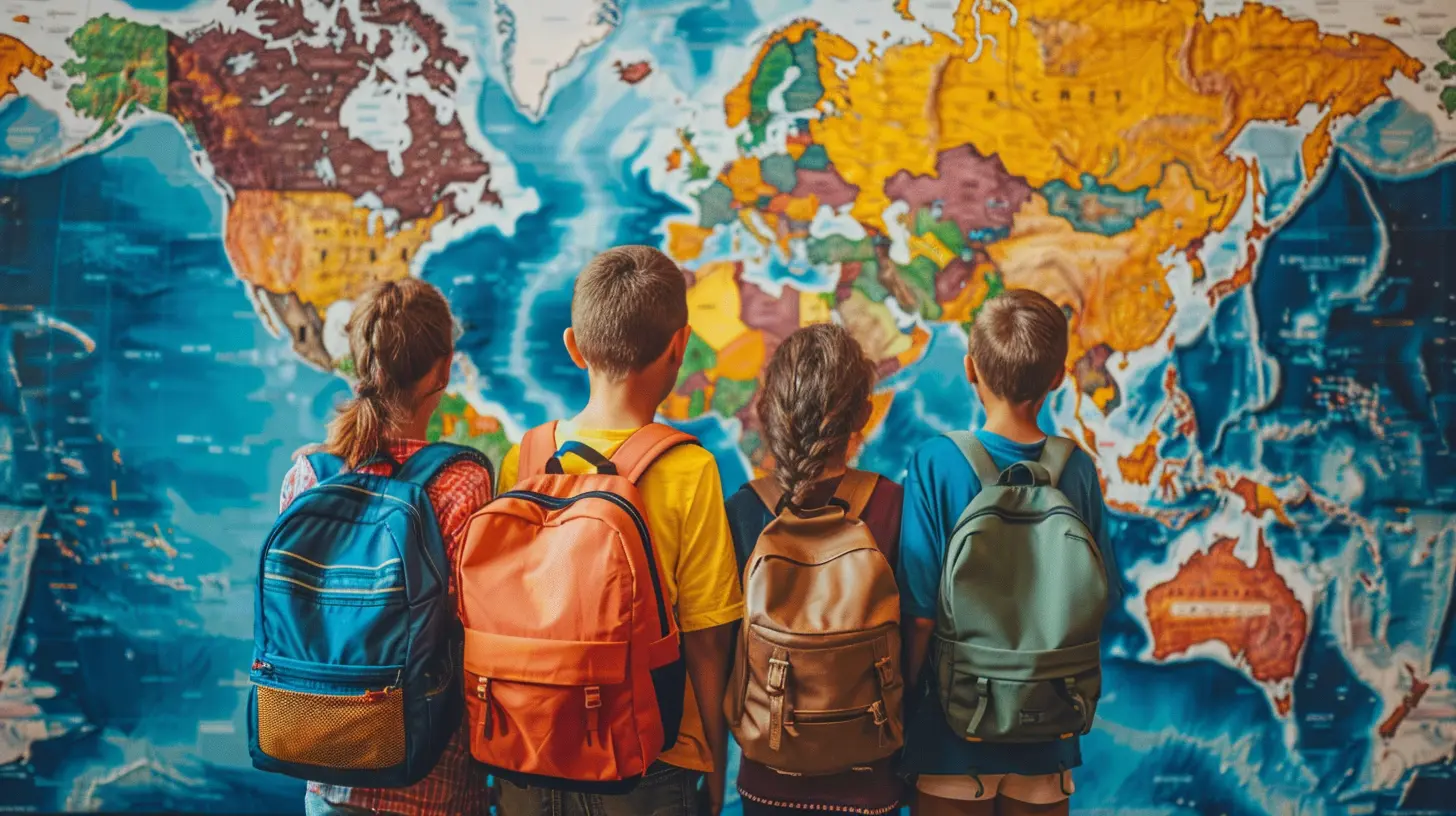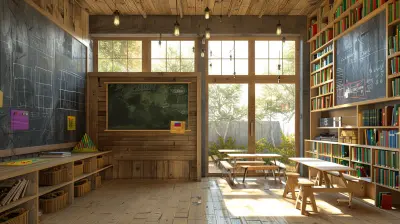How Cultural Understanding Promotes Student Success
1 July 2025
Ever been in a situation where someone looked at you like you had three heads just because you said or did something a little... different? Not wrong — just not what they’re used to. Now imagine that happening to a student in a classroom, every single day. Ouch, right?
Cultural understanding isn’t just some fancy phrase universities throw around to sound inclusive. It’s the secret sauce that turns a classroom from “meh” to a learning wonderland. It’s what helps each student – no matter where they’re from or what language they speak at home – feel they belong, matter, and can totally crush it.
So buckle in. We’re diving into the hilarious, heartwarming, and super important world of how cultural understanding actually helps students succeed.
What Even Is “Cultural Understanding”?
Let’s not overcomplicate it. Cultural understanding is basically being able to say:“Hey, your background, traditions, and way of thinking might be different from mine, but that’s cool — I get it.”
It’s about appreciating diversity, not tolerating it. There’s a difference, right? “Tolerating” is what you do when your roommate plays polka music at 7 AM. Appreciation is when you make polka pancakes themed after their playlist (okay, that might be taking it too far, but you get the point).
When teachers, classmates, and school staff understand each other’s cultures, magic happens. Like, real Hogwarts-level magic — only with fewer owls and more learning outcomes.
Why Is Cultural Understanding a Big Deal in Schools?
1. It Builds a Sense of Belonging
Raise your hand if you’ve ever felt like the odd one out. Nobody? Yeah, right — we’ve all been there.Students from different cultural backgrounds often walk into a classroom where:
- Their name gets butchered every time (even after correcting the teacher like... five times).
- Their holidays and customs are either ignored or misrepresented.
- Their home language is seen as a problem instead of a superpower.
That’s where cultural understanding swoops in to save the day. When schools take time to celebrate Diwali as much as they do Halloween, or when a teacher knows how to say “hello” in a student’s native language — BAM! Instant connection. That student feels seen, valued, and most importantly, like they belong.
And guess what? Students who feel they belong tend to participate more, try harder, and yep — perform better.
2. It Busts Stereotypes Faster Than You Can Say “Cliché”
Let’s be real. A lot of us carry around assumptions... like thinking all Asian students are math wizards or all Latinx kids can dance. (Spoiler: Neither is automatically true, and I’ve got two left feet to prove it.)When schools promote cultural understanding, they teach students (and teachers) to see each person as an individual — not just a walking, talking stereotype. That shift in thinking opens up space for authentic relationships. And trust me, real friendships can start when someone finally stops confusing your ethnicity with your entire personality.
3. It Boosts Communication (Even When Words Are Hard)
Have you ever tried explaining TikTok to your grandma? That’s a communication gap. Now imagine a student trying to write an essay in a language that’s not their own while also decoding slang like “YOLO” or “on fleek.”Cultural understanding doesn’t mean everyone suddenly becomes a walking Google Translate. But it does mean people take a breath, show patience, and adapt. Teachers might use visuals or stories from a student’s background. Classmates might slow down or switch it up to help each other out.
When communication flows — even if it’s imperfect — students gain confidence, and boom: better learning, better results.
How Teachers Can Flex Their Cultural Understanding Muscles
Teaching is basically a superpower. But even superheroes need to train, right? Here’s how educators can channel their inner cultural champions.🧠 Learn About Students’ Backgrounds (Yes, Every Single One)
No, you don’t need to memorize every holiday ever. But take a few minutes to ask questions like:- What’s a tradition your family celebrates?
- What language(s) do you speak at home?
- What does a typical day look like for you?
These conversations build trust and teach educators what makes each student tick.
📚 Include Diverse Materials
If your entire syllabus is written by old white guys (no offense, Shakespeare), it might be time for a refresh. Throw in books by authors from different cultures. Show documentaries or stories that highlight global perspectives. When students see themselves in what they’re learning, they lean in. Hard.🤝 Encourage Cross-Cultural Teamwork
Group projects are already a hot mess — why not make them useful?Mix students from different backgrounds. Not only do they learn from each other, but they also build empathy. “Oh, you do homework before dinner instead of after?” Cue the mind-blown emoji.
🥳 Celebrate Cultural Events (But Like, Actually Celebrate)
Throw a multicultural day. Cook food (or at least look at recipes together). Decorate the classroom. Share music and stories. It’s not about checking a box — it’s about creating an experience that says, “Your culture is amazing, and we’re here for it.”
The Student Side of Cultural Understanding
Students aren’t just on the receiving end of this cultural love-fest. They’ve got roles to play too.🌍 Be Open-Minded (Even When It’s Weird)
Yes, someone might bring fish stew for lunch. And someone else might not eat during daylight hours for a whole month. It’s different — not wrong.When students embrace “different,” they gain social skills that’ll help them in literally every job and friendship ever.
🗣 Share Your Own Culture
This isn’t just about fitting in, folks. It’s also about standing out.Telling others about your holidays, language, or family traditions not only educates — it makes you proud of who you are. Spoiler alert: pride and confidence fuel academic success like rocket fuel.
🤗 Call Out Ignorance (Kindly)
We’ve all been there when someone says something insensitive. If it’s safe to do so, speak up. Not to start drama — but to start understanding. “Hey, I know you didn’t mean it like that, but here’s what it actually means to me…” You’d be surprised how powerful that is.Parents and Cultural Understanding: The Unsung Heroes
Parents often get left out of this conversation, but they’re vital.When schools understand parents’ cultural expectations, values, and communication styles, everything gets easier. Like, "not fighting over homework at 11 p.m." easier.
Schools can:
- Translate newsletters and forms.
- Offer parent-teacher conferences in multiple languages.
- Invite families to share cultural experiences in the classroom.
This partnership supports students in and out of school. It’s like the Avengers, but for education.
The Academic Payoff: Real Talk
Okay, enough about feelings — let’s talk grades.🧮 Better Participation
Students who feel culturally recognized speak up more. They ask questions. They take risks. Basically, they stop hiding in the back row praying not to get called on.📝 Improved Test Scores
Studies show students perform better when their identity is seen as an asset, not an obstacle. Confidence = performance. It’s science.🧠 Critical Thinking on Fleek
When students engage with diverse perspectives, they start to think more deeply. Why? Because they're not just regurgitating facts — they’re analyzing, comparing, and questioning ideas. That’s the kind of brainpower that makes college admissions officers do a happy dance.So, What’s the Big Picture Here?
Cultural understanding isn’t just the cherry on top of a good education — it’s part of the cake batter.When students, teachers, and parents build bridges across cultures, amazing things happen:
- Students feel safe, confident, and proud of who they are.
- Classrooms become dynamic, energetic, and respectful learning zones.
- Academic performance gets a boost like it just drank three shots of espresso.
In short? Cultural understanding helps students thrive — and let’s be honest, we could all use a bit more thriving these days.
Final Thoughts (a.k.a. The Mic Drop Moment)
You don’t need to be a globe-trotting anthropologist to understand culture. You just need curiosity, respect, and a willingness to say, “Tell me more.” Every conversation, every classroom activity, and every act of empathy adds up.So, whether you’re a student trying to find your place, a teacher juggling 20 accents, or a parent hoping your kid doesn’t dread school — remember: cultural understanding isn’t about being perfect. It’s about trying. And that effort? That’s what creates student success.
Now go out there, learn something new, and maybe invite your classmate to try that fish stew. Who knows — you might love it.
all images in this post were generated using AI tools
Category:
Cultural AwarenessAuthor:

Olivia Chapman
Discussion
rate this article
1 comments
Flint Hall
Embracing cultural understanding enriches our educational journey, fostering empathy and collaboration. Let’s celebrate diversity as a powerful tool for unlocking every student’s potential!
July 15, 2025 at 3:25 AM

Olivia Chapman
Thank you for highlighting the importance of cultural understanding! It truly is a key driver in fostering empathy and collaboration, enriching our educational experiences and unlocking potential in every student.


